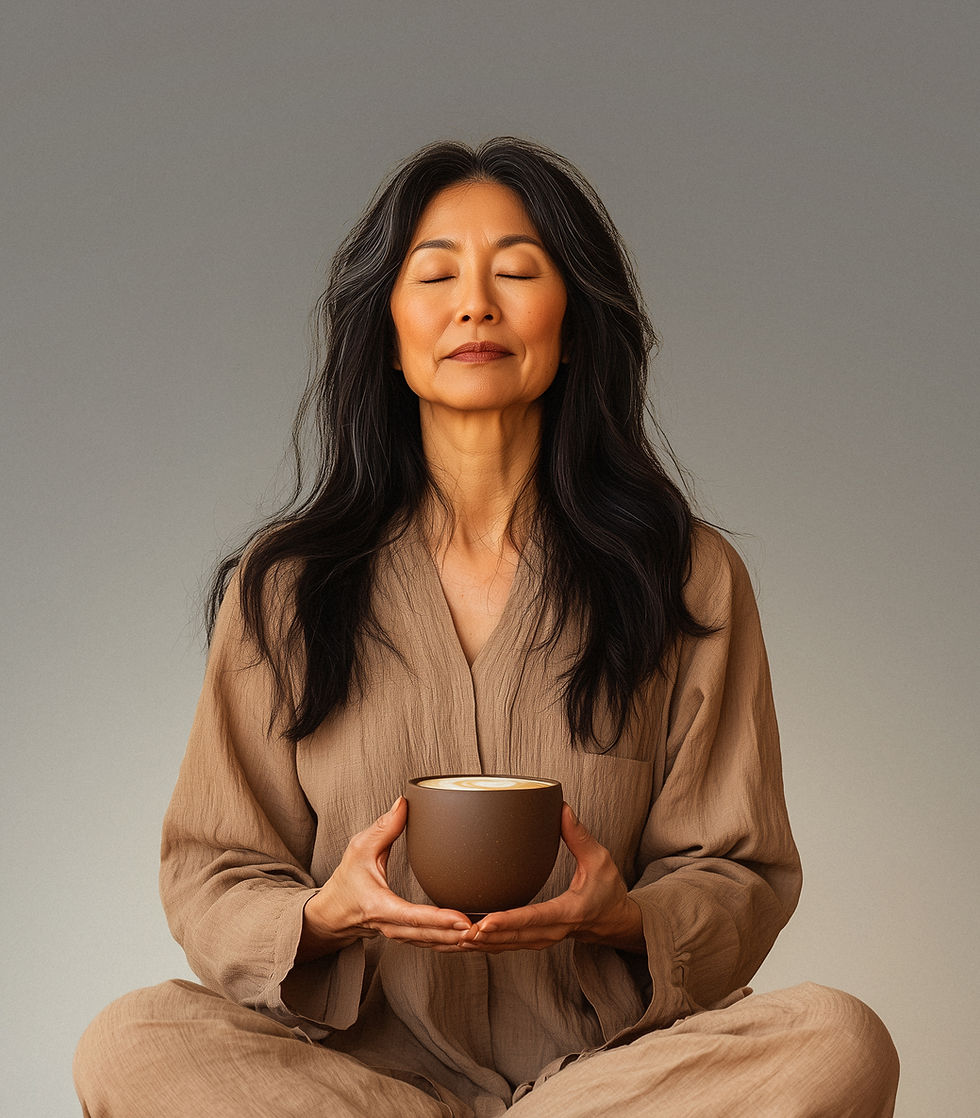Ayurvedic Skin Rituals to Rescue Summer-Stressed Skin
- Neeta Verma
- Aug 4
- 4 min read
Updated: Sep 9

Late summer’s golden light may feel good to the soul, but it’s not always kind to your skin. Heat, midday sun exposure, dehydration, and long days outdoors can leave your complexion dull, dehydrated, and prematurely aged, and that's setting aside the age factor. Fortunately, Ayurveda offers a powerful age-defying antidote: abhyanga, the daily practice of warm oil massage.

We need sunlight in moderate proportions. Our wake-sleep cycles depend on it. As do a number of other critical functions in the body. Our skin is able to naturally produce Vitamin D with exposure to the UV (ultraviolet) wavelength of sunlight, which is strongest at midday. Vitamin D is crucial for bone health, immunity, and mood. Research shows that Vitamin D deficiencies are associated with infection, cancer, diabetes mellitus, cardiovascular disease, and autoimmune disease (1).
On the flip side, too much sun exposure opens us up to aging, damage to the skin and repair mechanisms within the skin, sunburn, hyperpigmentation, skin thickening, and skin cancer. One's propensity for these skin issues depends on one's diet, skincare practices, quantity of melanin, genetics, and most importantly frequency and intensity of light exposure.

Wrinkles form when collagen breaks down, elastin weakens, and the skin loses moisture, antioxidants, and nutrients. UV exposure from the summer sun accelerates this damage, triggering oxidative stress, inflammation, and the enzymes (MMPs) that degrade skin structure. Combine that with dehydration, sweat, chemicals in our skin creams, and depleted oils — and skin can feel tight, dry, rough, or older than it should.
Protecting and nourishing our skin, the largest organ of the body, is a balancing act. So what can be done?
Begin your day off right: Within the first 30 minutes of waking up, find a window seat or better yet, step outdoors onto a deck, patio, or balcony, or go for a walk, run, or stroll, and set your gaze in the direction of the horizon. Those morning rays of light (before 10am), are the most beneficial because the naturally occurring longer wavelengths -- such as red light -- stimulate your brain, wake you up, and increase your energy. Morning light is essential to set our internal body clocks! This early light is also said to prime the skin to handle stronger sunlight later.

Adjust exposure based on time of day: Paying attention to time of day and the strength of the sunlight is particularly important when doing any activities outdoors -- whether that's playing at the beach, picnicking at a park, hiking along trails, or running or walking in urban areas. According to Ayurveda, in the summertime, exercise in the early morning (until 10am) is considered better than midday because of the intensity of the sun. Consider wearing comfortable breathable fabrics, wearing hats, and applying skin protectants based on your skin type. To protect your skin, it's important to consider your own skin sensitivities and family history. For many, tinted sunscreens (iron oxides with titanium dioxide) can help prevent hyperpigmentation from both UV light and visible light (2). In Ayurveda, both herbs and medicinal oils can help to protect the skin.

Should one care about light from their digital devices? The simple answer is YES. While digital devices (e.g. phones, laptops, tablets) emit blue UV light that is weak in terms of its ability to damage the skin, the same blue light is a super signaler to our brains to stay awake and alert. During the daytime, blue light helps with alertness, mood, and cognitive performance. The problem is blue light exposure after sunset, when the brain expects darkness. The blue light causes the brain to suppress hormones that signal "sleep", negatively affecting restful and timely night sleep, with a potential to disrupt the sleep cycle, cause brain fog, fatigue -- this ultimately interrupts skin repair mechanisms that occur at night during sleep, accelerating skin aging. After sunset, consider wearing blue light blockers or changing settings on your devices to shield you from blue light.
Take care of your largest organ. Have a skincare practice: Ayurveda sees this as an imbalance in both vata and pitta dosha: dryness, heat, and instability in the body’s outer layer. Ayurveda has an age-old holistic approach to support the skin through the practice of Abhyanga.
Abhyanga supports the skin through biochemistry, physiology, and energetics.

This soothing ritual cools, calms, and nourishes the skin. Oil selection depends on one's constitution (proportion of vata, pitta, and kapha in one's body). This can be assessed by a trained Ayurvedic practitioner, who can also advise you on the best oils for your stage of life, season, climate, activities, and imbalances. Ayurveda holds the key to longevity with oils that help repair damage, restore hydration, and support healthy collagen. Ayurvedic herbal-infused oils penetrate deeply, flushing toxins, calming inflammation and reducing oxidative stress, and protecting the skin’s barrier against further damage. Plus, the massage itself boosts circulation and lymph flow — refreshing tired tissues, reducing puffiness, and enhancing your natural glow. Abhyanga holds deeper secrets in its ability to reduce pain, tonify muscles, as well as calm the nervous system. In addition, a trained practitioner can also advise you on the foods and habits that can best support skin nutrition, further strengthening the effect of abhyanga.
Let your skin recover with intention. Begin with a few minutes of abhyanga each day. It can soften the signs of sun, restore luster, and carry your glow into fall, preventing vata from further dulling one's skin.
Your skin doesn’t have to age with the season — give it the Ayurvedic reboot it deserves.
References:
(1) Cui A, Xiao P, Ma Y, et al. Prevalence, trend, and predictor analyses of vitamin D deficiency in the US population, 2001-2018. Front Nutr. 2022;9:965376. Published 2022 Oct 3. doi:10.3389/fnut.2022.965376
(2) Zhou C, Lee C, Salas J, Luke J. Guide to tinted sunscreens in skin of color. Int J Dermatol. 2024;63(3):272-276. doi:10.1111/ijd.16954
